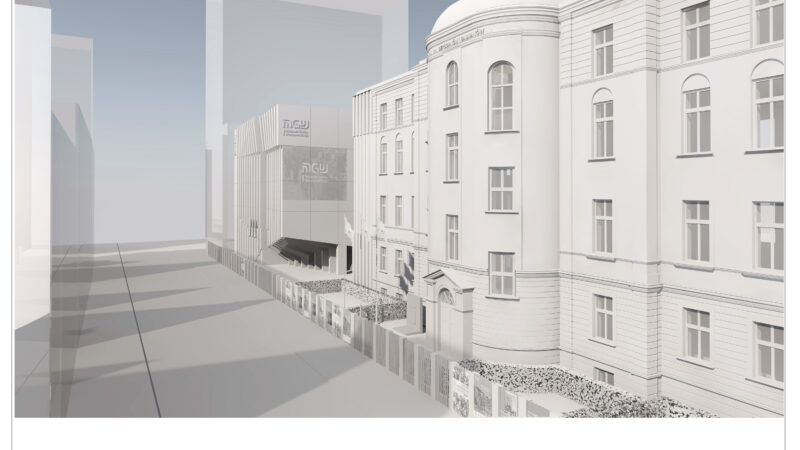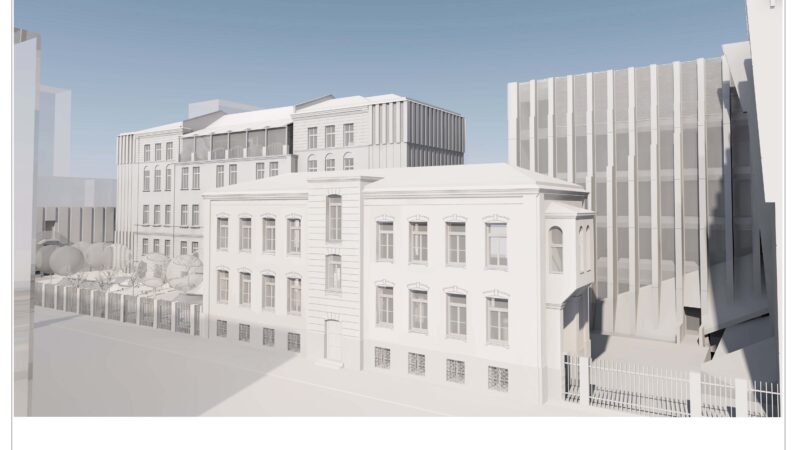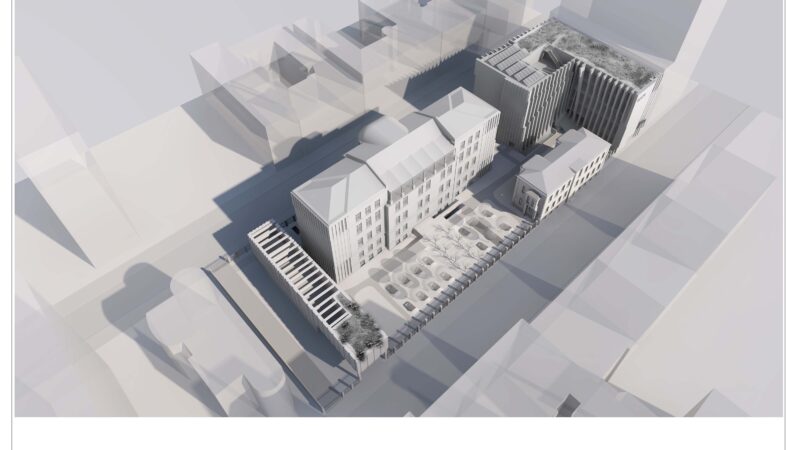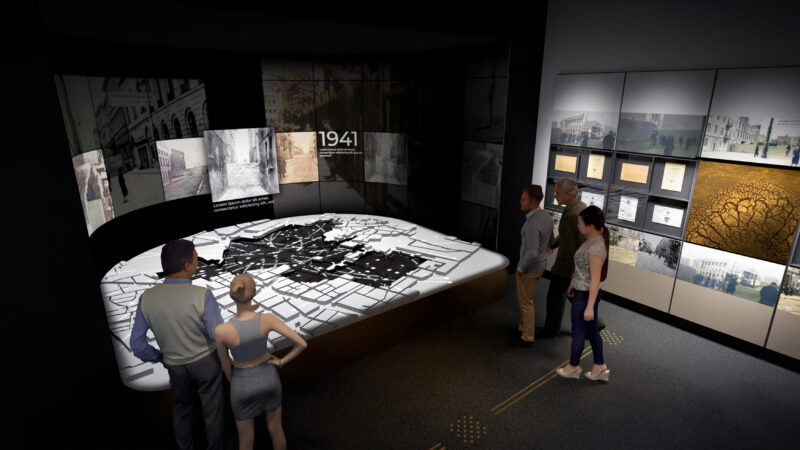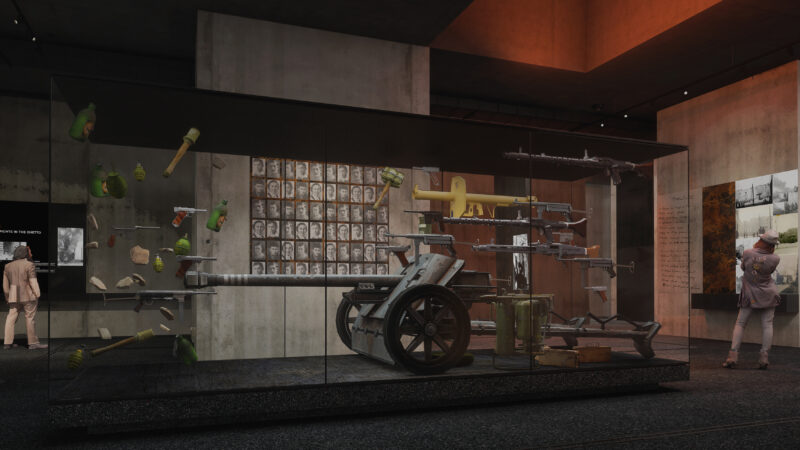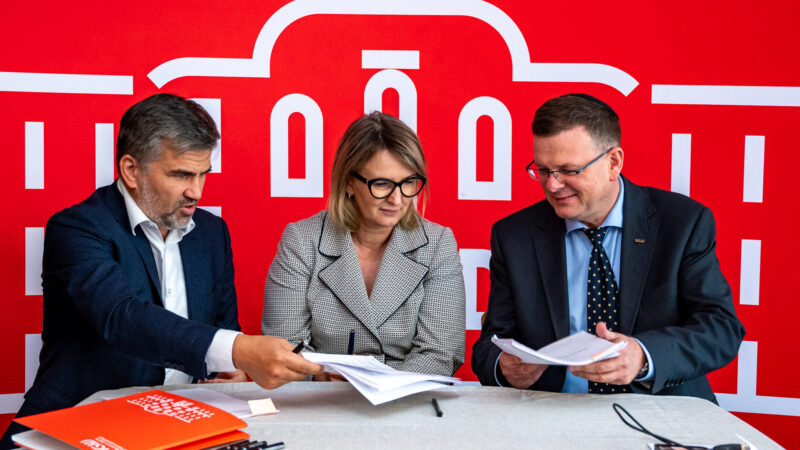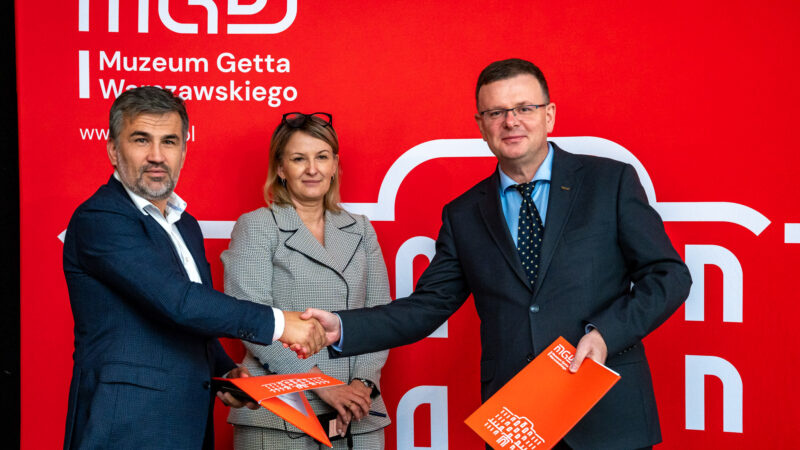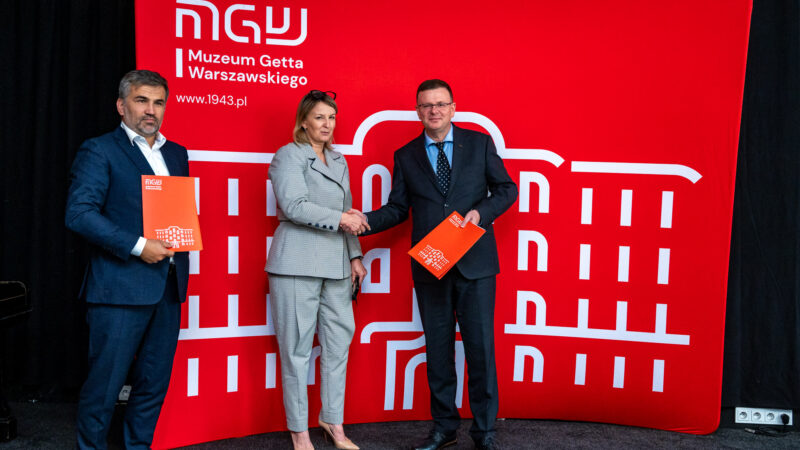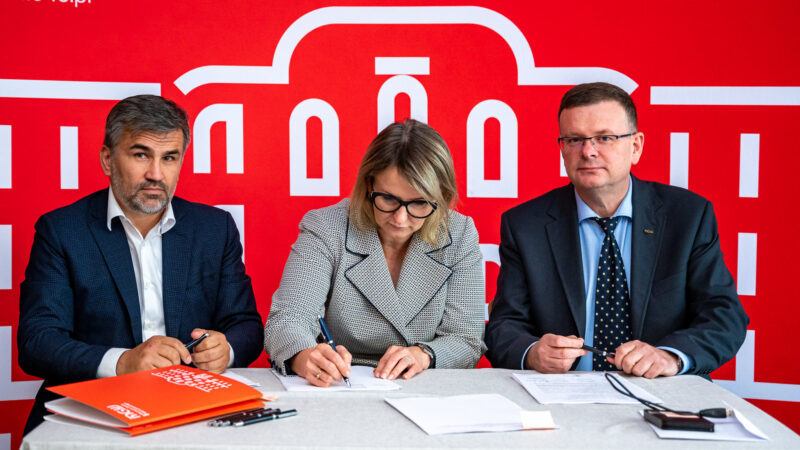Construction of the Warsaw Ghetto Museum begins
On Wednesday, October 11th, 2023, a contract was signed for the construction and conservation works, including indoor and outdoor infrastructure, as well as the implementation of a permanent exhibition of the Warsaw Ghetto Museum.
The agreement was signed by Albert Stankowski, Director of the Warsaw Ghetto Museum, Wojciech Gerber – President of the Management Board of Adamietz Warszawa sp. z o.o. and Agnieszka Galewska – Member of the Management Board of Adamietz Warszawa sp. z o.o. The gross value of the contract is PLN 295,446,000.00. The works carried out by the consortium of ADAMIETZ Warszawa sp. z o.o. and ADAMIETZ sp. z o.o. Construction and conservation works, including the permanent exhibition, are to be completed in 30 months.
The Warsaw Ghetto Museum will be housed in the premises of the former Children’s Hospital of the Bersohn and Bauman Foundation at 60 Sienna/51 Śliska Street in Warsaw. The project, designed by KB – Projekty Konstrukcyjne sp. z o.o., envisages approximately 3,400 m2 of usable floor area for the permanent exhibition divided into 9 galleries. Professor Daniel Blatman and the team of curators of the Warsaw Ghetto Museum have prepared the concept.
The historical narrative of the permanent exhibition begins with the opening of the Bersohn and Bauman Hospital in the late 1870s to emphasise the close connection between the history of the building and the history presented inside. It ends with the end of the war in 1946 when the former hospital became the first headquarters of the Central Committee of Jews in Poland and a symbol of the early efforts aimed at commemorating the victims of the Holocaust. It was here where the works on the newly-found Ringelblum Archive commenced.
The history of the Warsaw Ghetto will be presented within the context of occupied Warsaw – divided and destroyed, and therefore particularly vulnerable and susceptible to a whole range of attitudes and behaviours. The programme of the permanent exhibition will feature complementary narratives about life in the ghetto and life in the city. Visitors will follow the fate of Warsaw’s Jews in the context of the tragedy of the Holocaust, starting from the top floor of the building down into ever darker chapters of history.
The permanent exhibition will display authentic objects and artefacts donated, purchased, or loaned to the Museum. One of them is the Stroop Report, prepared in May 1943 by Jürgen Stroop, the commander of the German liquidation troops in the Warsaw Ghetto, for Heinrich Himmler, which was donated to the Warsaw Ghetto Museum by the Institute of National Remembrance. Among the exhibits, there is also a cart from the 1930s used for transporting dead bodies, discovered and purchased after the war by Pinkus Szenicer, a long-time guard of the Jewish cemetery in Warsaw, with the help of The Nissenbaum Family Foundation. Other important items on display include everyday objects, objects used for religious worship, and remnants of the collection saved from a burnt library found during excavation works in the ghetto area, including at Miła Street.
The total projected usable floor area of the Warsaw Ghetto Museum is approximately 11,500 m2. The museum complex will also house an Education Centre in the historic pavilion of the former Ophthalmology Department, a 150-seat auditorium, facilities used for storing the collections, and space for temporary exhibitions.The project is supervised by a multidisciplinary team of supervisors from ECM Group Polska S.A. and implemented with funds from the Ministry of Culture and National Heritage, with the support of the Minister of Culture and National Heritage, Professor Piotr Gliński.


